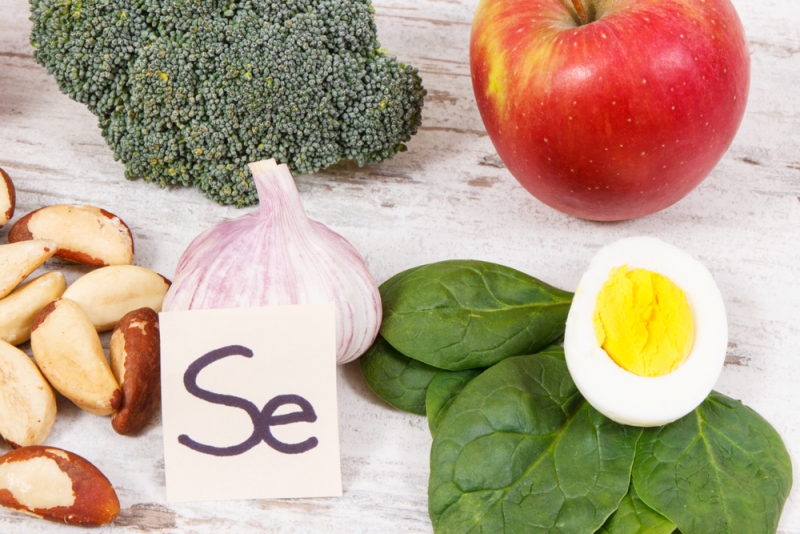Selenium is an integral component necessary for glutathione peroxidase activity and is the subject of much research which has demonstrated its substantial role in human health, with particular interest in its immunomodulatory and antiviral capabilities.
Selenium acts primarily through selenoproteins, many of which are antioxidant selenoenzymes, and it is the cells of the immune system that express the majority of the 25 genes encoding for human selenoproteins, with the GPx GPx1 and GPx4 isoenzymes showing the highest levels of expression in both T lymphocytes and macrophages.
Supplementation with 100 μg/day of Se in the form of selenite resulted in increased gene expression of factors required for protein biosynthesis in isolated blood lymphocytes, indicating increased lymphocyte proliferation at supranutritional intakes of selenium.
At adequate selenium intakes, CD4+ T-cell differentiation is thought to be susceptible to the action of cytokines and antigen-presenting cells. Conversely, selenium deficiency may favour a type 2 (Th2) T helper phenotype, whereas supranutritional selenium shifts the Th1/Th2 balance towards a Th1 phenotype.
On the other hand, selenium status influences macrophage activation. Dietary supplementation in patients with low selenium status could therefore help support the proinflammatory, Th1-type cellular immune response against viral and bacterial pathogens, while excessive immune system activation and subsequent tissue damage is prevented by guiding macrophage differentiation towards a more anti-inflammatory M2 phenotype.
Dietary selenium supplementation in populations at risk of moderate deficiency, such as in many countries in Europe and Africa and in some regions of East Asia, could serve as an inexpensive and widely available adjuvant therapy of viral infections. Curiously, the beneficial effects of selenium have been reported almost exclusively for Rna virus infections, while information on selenium and Dna viruses remains scarce.
One notable exception is an intervention trial in China’s Qidong province, a region with selenium-poor soil: supplementation reduced the incidence of liver cancer associated with hepatitis B DNA virus infection. Dietary supplementation with selenium-containing multimicronutrients is currently considered useful for improving supportive care and strengthening the immune system of patients suffering from newly emerging viral diseases, such as the current Ebola fever epidemic in West Africa.
A review a few months ago assessed the efficacy of selenium in delaying the progression of HIV infection: data from the randomised trials reviewed suggest that supplementation with 200 μg/day in HIV-infected patients naïve to antiretroviral therapy or those on therapy does not suppress HIV, but may delay the reduction of CD4 cell counts and thus prolong the time to AIDS onset.
The proposed mechanism by which selenium supplementation could be of benefit ranges from selenium’s ability to protect against oxidative stress through glutathione peroxidase, to modulating cell-mediated and humoral immunity, all important targets for hindering HIV replication and combating infection.
In particular, adequate selenium status upregulates interleukin-2 production and helps CD4-positive naïve T cells to proliferate and differentiate into T helper 1 cells, thus supporting the cell-mediated immune response to HIV. In addition, adequate selenium status also has the potential to downregulate the higher than normal concentrations of IL-8 and Tnf-alpha associated with increased HIV replication.
On the other hand, low selenium status increases immune cells by tilting the differentiation of CD4 naïve T-positive cells into Th2 effectors, which may increase the progression of HIV infection. Thus, while there is clinical evidence that selenium supplementation may delay the onset of AIDS, there is a lack of quantifiable evidence that selenium supplementation suppresses or reduces the HIV viral load.
Importantly, both beneficial and toxic effects of selenium have been reported in the literature and its action is highly dependent on the chemical form and concentration used. In addition, there is a relatively narrow window between deficiency and toxicity, and a growing body of evidence suggests that health effects are highly dependent on the baseline level of this micronutrient. This is where the variability of intake of this nutrient comes into play: selenium is mainly taken as selenomethionine, selenium-methylselenocysteine or γ-glutamyl-selenium-methylselenocysteine from vegetables, as selenocysteine from meat and as selenoneine in marine fish.
Bibliography
Selenium supplementation in Hiv-infected individuals: a systematic review of randomized controlled trials. Clinical nutrition Espen Volume 34 December 2019
Dietary selenium in adjuvant therapy of viral and bacterial infections. Adv Nutr. 2015 Jan 15;6(1):73-82.
The role of selenium in inflammation and immunity: from molecular mechanisms to therapeutic opportunities. Antioxid redox signal. 2012 Apr 1;16(7):705-43.

